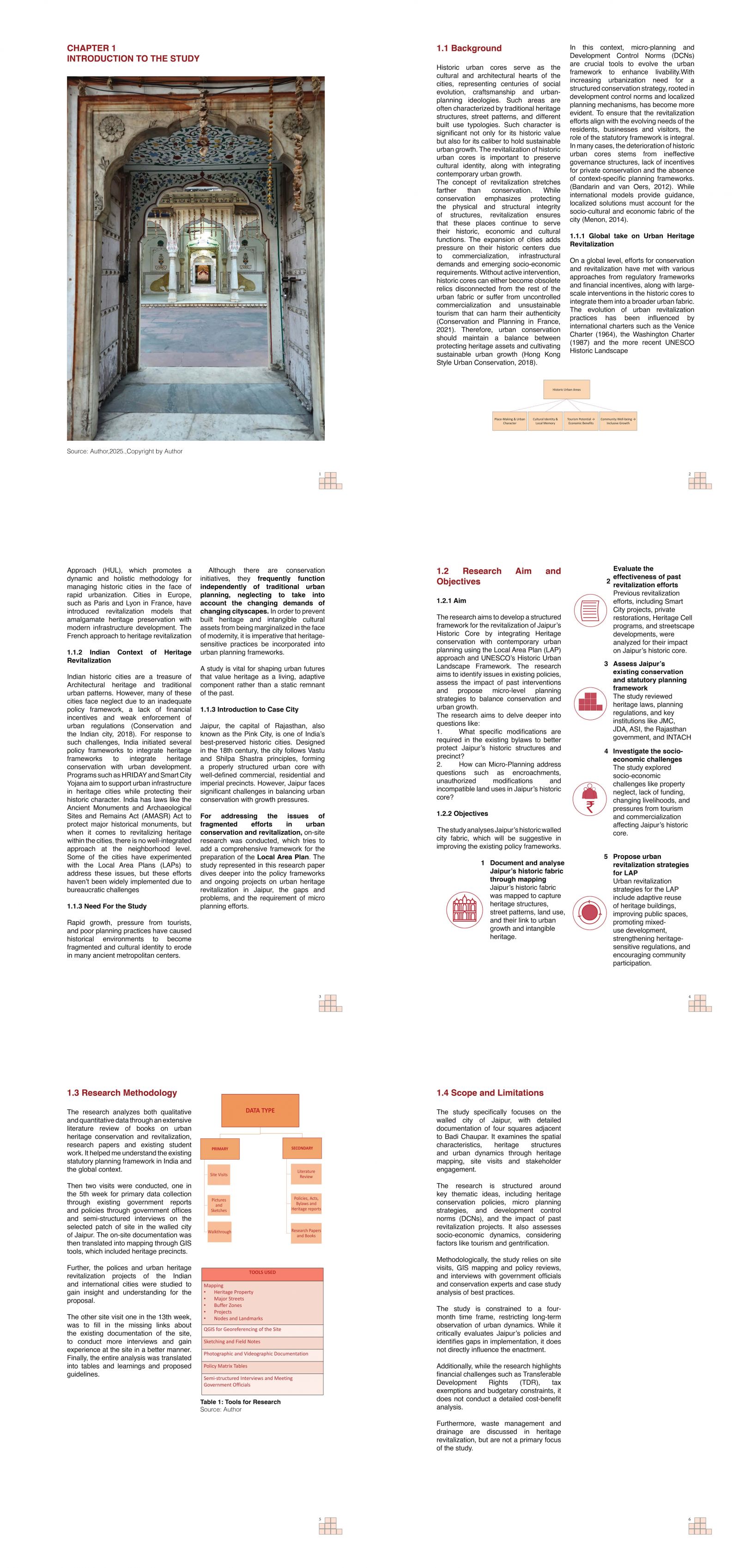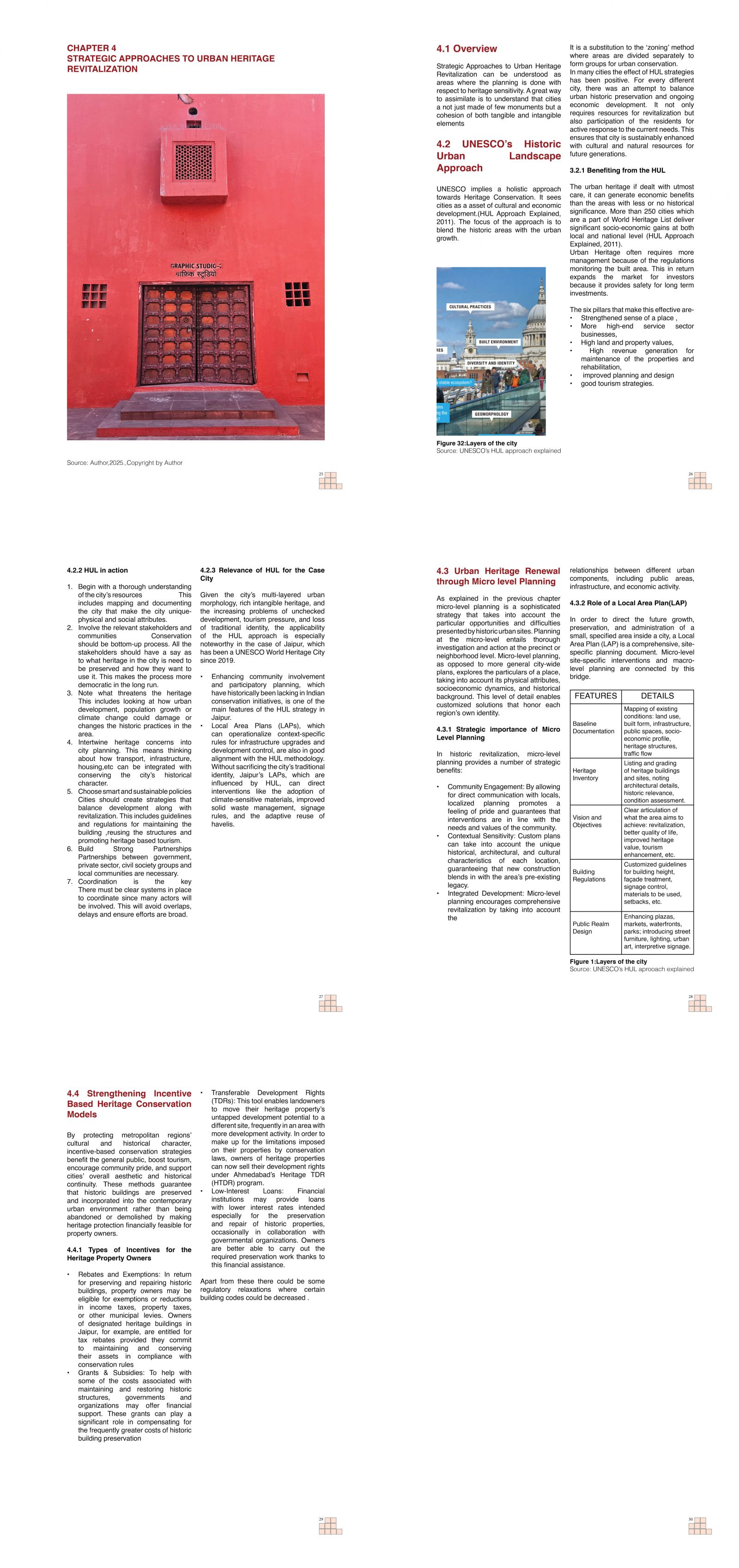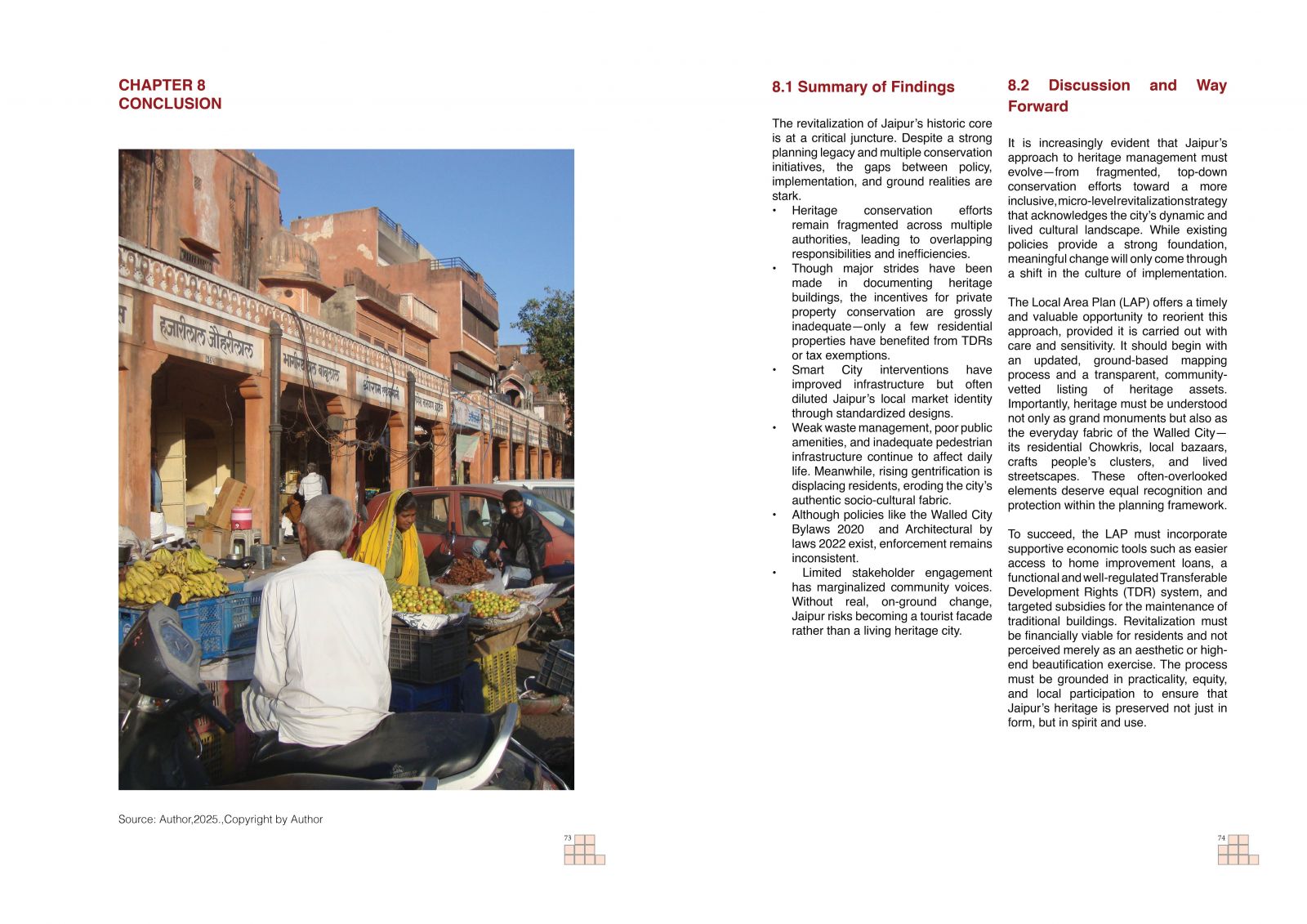Your browser is out-of-date!
For a richer surfing experience on our website, please update your browser. Update my browser now!
For a richer surfing experience on our website, please update your browser. Update my browser now!
As historic city cores face increasing pressure from urban expansion, there is a growing need to balance heritage conservation with contemporary development. This study focuses on Jaipur’s Walled City, evaluating the effectiveness of existing heritage policies and their integration with local urban planning. By applying the UNESCO Historic Urban Landscape (HUL) approach, supported by statutory reviews, site surveys, and case study analysis, the research identifies key gaps in implementation, particularly around private incentives, adaptive reuse, and pedestrian infrastructure. Observations from Badi Chaupar and surrounding squares reveal how conservation must align with everyday urban life. The study proposes a Local Area Plan (LAP)-based framework as a strategic tool for context-sensitive, inclusive revitalisation of Jaipur’s historic urban fabric.
View Additional Work







